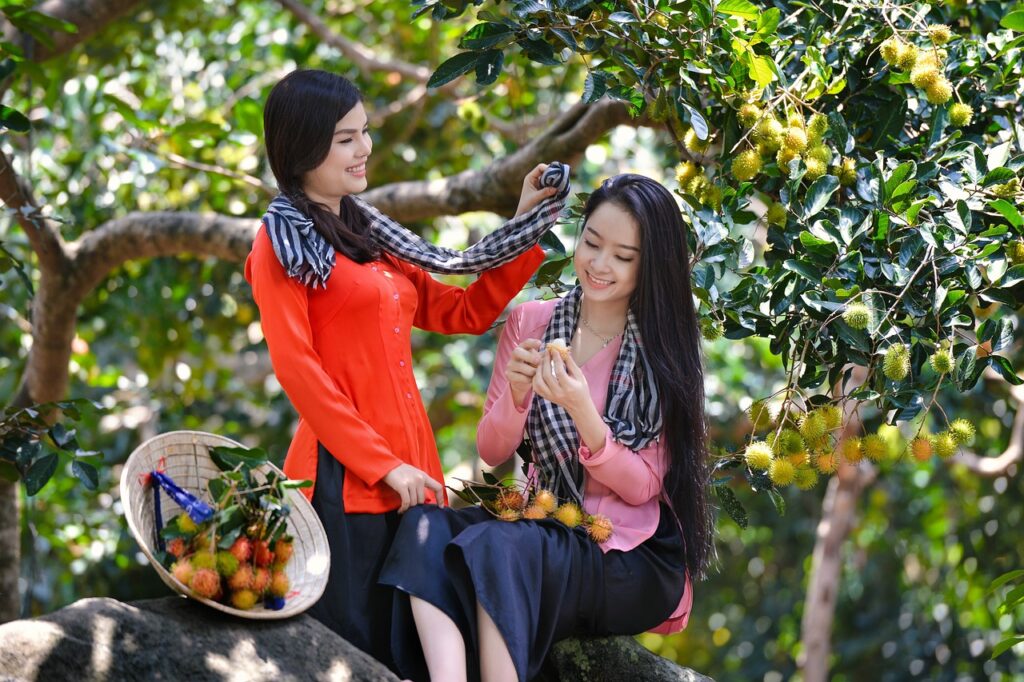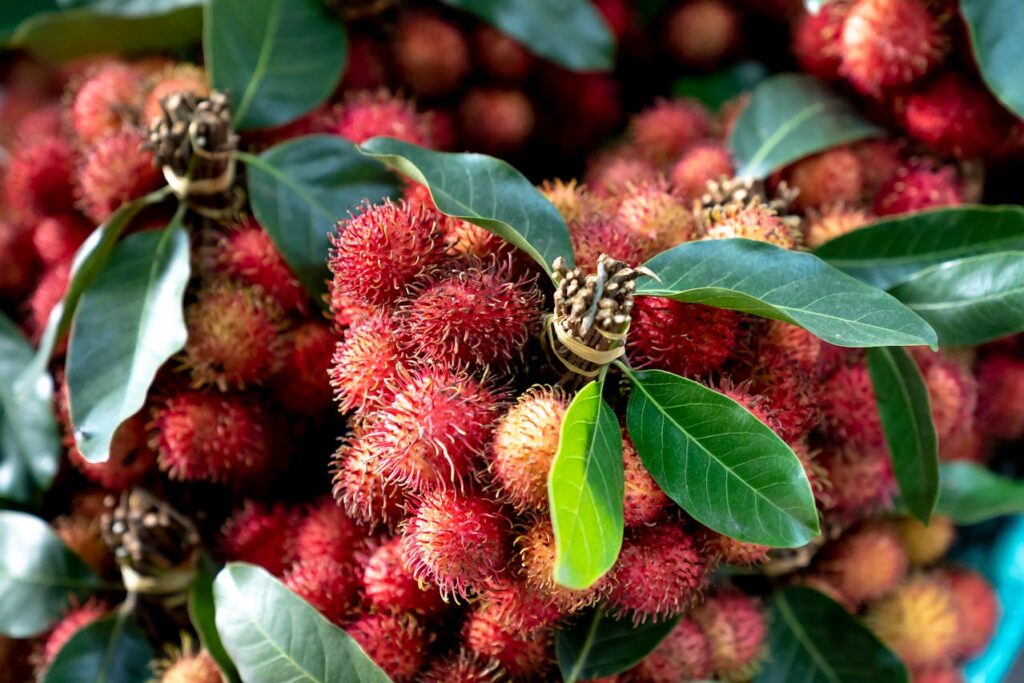
Learn Rambutan Cultivation Tips: Growing Sweet, Juicy Tropical Fruit that will come in handy at the end of the day we all have to eat so everyone should learn how to grow crops.
Welcome to the world of rambutan Growing and Harvesting tips! With its sweet and juicy flesh encased in a hairy shell, rambutan is a tropical fruit beloved by many. If you're interested in growing your own rambutan trees, you're in the right place. In this comprehensive guide, we'll delve into the essential techniques and strategies for growing and harvesting rambutan, which include choosing the right soil, planting seeds, caring for young saplings, and harvesting techniques. By adhering to these rambutan cultivation insights, you can ensure a fruitful harvest of this delightful tropical treat.
Before diving into the cultivation process, let's cover the basics to ensure successful rambutan growing:
Choose a sunny location with well-draining soil for planting your rambutan trees. Rambutan thrives in tropical climates and requires plenty of sunlight to produce healthy fruit.

Prepare the planting area by amending the soil with organic matter such as compost or well-rotted manure. Ensure the soil is loose and fertile to promote healthy root growth. High, sandy loam soils are good for rambutan cultivation. However, cultivation is also carried out on clay-loam soil. However, if there is more organic matter in the soil, the rambutan plant grows better and bears more fruit. Soil acidity or pH value should be between 4.5 and 6.5.
To ensure successful rambutan cultivation, it's best to plant before the monsoon. Dig holes measuring 80 cm to 1 meter on all sides. Mix half organic manure and soil in the hole, leaving it for a week. Plant the seedling upright in the middle of the hole and tie it with a stick, then irrigate the base. In commercial orchards, plant 80 to 120 seedlings per hectare. Prune all unwanted tips and dead branches from the trunk. After fruit picking, break the stem of the fruiting branches like a lychee tree to encourage new growth. Apply fertilizers containing nitrogen, phosphorus, and potash in a ratio of 14:4:3.5 depending on plant growth and age. Add a small amount of dolomite lime, avoiding excess as it can damage plants. Fertilize from planting until the tree is 20 years old.
Now that you've prepared the soil, it's time to plant and care for your rambutan trees:
Plant rambutan seedlings in holes slightly larger than their root balls. Ensure the soil is firmly packed around the roots and water thoroughly after planting to settle the soil.
Provide regular watering to newly planted rambutan trees to help establish their root systems. Once established, water deeply but infrequently, allowing the soil to dry out slightly between watering sessions.
Suitable Weather:
In Asian countries, rambutan grows between 22 and 30 degrees Celsius. 12 to 15 degrees Celsius is best in slightly cooler areas. Rambutan does best in areas with high rainfall. If not, more irrigation should be done.
In Malaysia, Indonesia, Philippines and Thailand, only those varieties that grow and give good results can be cultivated. Because the weather of those countries is similar to the weather of other countries of the world
Sibabat of Philippines, Lee of Singapore, P1, P4, P5, P6, P8, P22, P28, P54, P63 of Malaysia and Merah and Koeneng of Indonesia are notable for commercial cultivation in the world.
Rambutan seedlings are made by grafting. The head of a one-year-old seedling grown from seed is cut off, the tip of a rambutan plant bearing fruit is split into three pieces and tied with a ribbon. This method is called cleft grafting. A well-shaped tree can be obtained by eye grafting. Just before spring is the perfect time to apply eyeliner.
Rambutan trees benefit from regular fertilization to support healthy growth and fruit production:

Apply a balanced fertilizer formulated for fruit trees three to four times a year, following the manufacturer's recommendations. Avoid over-fertilization, as excessive nitrogen can promote vegetative growth at the expense of fruit production.
Supplement with micronutrients such as zinc, magnesium, and boron as needed to correct any deficiencies and ensure optimal nutrient uptake by rambutan trees.
Preventing pests and diseases is crucial for maintaining the health and productivity of your rambutan orchard:
Regularly inspect your rambutan trees for signs of pest infestation, including fruit flies, aphids, and scales. Identify pests early to take prompt action and prevent damage to the fruit.
Implement an integrated pest management approach that combines cultural, biological, and chemical control methods to manage pests while minimizing environmental impact.
Knowing when and how to harvest rambutan ensures optimal flavor and quality:
Harvest ripe rambutan fruits when the spines or hairs on the fruit shell start to turn brown and dry. Gently twist the fruit from the stem to avoid damaging the delicate skin.
Store harvested rambutan fruits in a cool, well-ventilated area away from direct sunlight. Rambutan can be stored at room temperature for a few days or refrigerated for extended freshness.
A1: Rambutan trees typically start bearing fruit three to five years after planting, although this timeline may vary depending on growing conditions and tree variety.
A2: Rambutan trees are sensitive to cold temperatures and prefer warm, tropical climates. Protect young trees from frost and provide shelter during periods of cold weather.
A3: Pruning rambutan trees is generally not necessary, except to remove dead or diseased branches and to shape the tree for better fruit production and sunlight exposure.
A4: Rambutan trees can be propagated from seeds, air-layering, or grafting. However, propagation from seeds may result in variability in fruit quality and characteristics.
A5: Yes, rambutan fruits are rich in vitamins C and A, as well as minerals like potassium and calcium. They also contain antioxidants that promote overall health and well-being.
A6: Rambutan trees typically start bearing fruit three to five years after planting, although this timeline may vary depending on growing conditions and tree variety.
A7: Rambutan trees are sensitive to cold temperatures and prefer warm, tropical climates. Protect young trees from frost and provide shelter during periods of cold weather.
A8: Pruning rambutan trees is generally not necessary, except to remove dead or diseased branches and to shape the tree for better fruit production and sunlight exposure.
A9: Rambutan trees can be propagated from seeds, air-layering, or grafting. However, propagation from seeds may result in variability in fruit quality and characteristics.
A10: Yes, rambutan fruits are rich in vitamins C and A, as well as minerals like potassium and calcium. They also contain antioxidants that promote overall health and well-being.
Rambutan usually flowers on dry days immediately after spring and fruits in summer-monsoon. After flowering, it takes about 90 to 120 days to ripen the fruit. Fruiting starts from three years after planting and good yield is obtained for up to 20 years. Depending on the variety, a three-year-old tree yields 15 to 20 kg of fruit, a nine-year-old tree yields 55 to 200 kg of fruit, a 20-year-old tree yields 300 to 400 kg of fruit. The fruit turns red when ripe. Then the fruit can be picked one by one or with the whole bunch. Cultivating rambutan trees in your orchard or garden can be a rewarding experience, allowing you to enjoy the exotic flavors of this tropical fruit right at home. By following the tips and techniques outlined in this guide, you can successfully grow and harvest rambutan fruits for years to come.
Note : If you want to know and ask more questions about agriculture, you can contact here

Copyright 2024 Farming Solutions